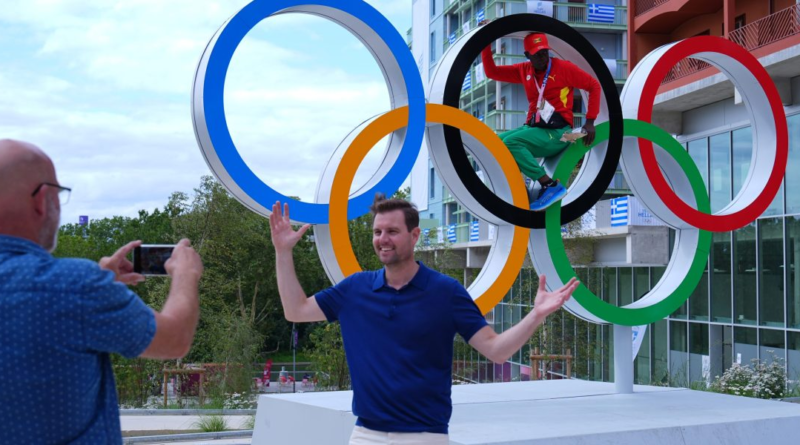Paris Saint-Denis and London Stratford tell a tale of two difficult suburbs transformed by the Olympic Games
Major sporting events have one thing in common—they are often embraced by a global audience with anticipation and excitement but met with high levels of national cynicism. The Paris 2024 Olympics are no exception. As the games commence, a migraine-inducing amount of criticism has dominated the headlines, ranging from ongoing security concerns to unsold tickets to the murky waters of the Seine River.
The Games are not simply a showcase of athletic prowess—they are a celebration of international unity that brings together communities and athletes from around the world. Such events’ economic contributions are heavily scrutinized at a national level as a vital metric of success given the considerable costs of hosting. Yet focusing solely on the immediate impact of the Games misses the critical question: What benefits does the host city and nation see once the Olympic torch is extinguished?
Creating an economic Olympic legacy
The organizers of Paris 2024 must look ahead to how the Games can leave a lasting legacy for the local community, city, and nation once the curtains come down at the closing ceremony.
Unlike previous Olympics, Paris sought to renovate its existing stadiums and areas rather than build new foundations. To avoid the dreaded “white elephant” that has plagued host cities in the past, it will need to repurpose these areas into residential and recreational spaces, enabling community ownership of the legacy.
Lessons learned from London 2012 on how prioritizing innovation and urban development leads to sustained growth can guide Paris and even future hosts such as Los Angeles in 2028. London’s redevelopment was by no means perfect—but the transformation of Stratford post-2012 offers valuable lessons for Paris. Much like the East London area once was, the banlieue of Seine-Saint-Denis (where the Olympic and Paralympic village is situated) is one of the most deprived areas in Paris and all of France.
From my own experience with the 2012 London Olympics, the Games’ success is grounded in a long-term strategy focused on regeneration and investment in the area. Authorities and private businesses must collaborate to ensure the Games’ legacy is responsive to local needs. This approach was pivotal in transforming East London and the Queen Elizabeth Olympic Park into a desirable destination for investment and long-term growth.
A responsible plan will consider the impact of the Games 10, 20, or even 30 years down the line. Top of mind must be how renovated infrastructure can be leveraged and evolved to meet the community’s needs. Paris can and should look to London’s success in transforming Stratford and the Queen Elizabeth Olympic Park as a best-in-class example of urban regeneration.
In the decade since the London Games, local employment has grown by 40%, with over 110,000 jobs created in the boroughs surrounding the Queen Elizabeth Olympic Park and over £3 billion invested in the area, on top of original Olympic investment.
Learning from London
Paris will need a strategic organization in place that can work across neighborhoods and boundaries. It must be a unique confluence of innovation, talent, and creativity, that is rooted in collaboration, to promote education, future employment, and opportunities in the area.
Olympic facilities must continue to benefit residents long after the Games have ended is crucial. That’s why investment in education is a cornerstone of creating a sustainable Olympic legacy. Equipping locals with the right skills supports long-term employment opportunities and promotes economic growth and social mobility. The London 2012 Games saw initiatives such as a school within the Olympic Park, which provided comprehensive education and helped foster a sense of community.
Despite critics’ claims, the Olympic Games will serve as a natural catalyst for short-term economic growth, generating immediate revenue. Yet the challenge lies in sustaining this early momentum by leveraging infrastructure to stimulate local business. My business transformed the former International Press and Broadcast Centre into a thriving campus hosting universities and businesses. This transformation has led to significant economic contributions, including £700 million towards the U.K. GDP and supporting 5,000 jobs in neighboring boroughs.
But even a strong local economy cannot grow in isolation—it must be connected to the rest of the capital to attract tourists, business, and ultimately investment. A famous example is the introduction of the Elizabeth Line in 2022, a high-speed train stretching from London’s major airports in the west to the Olympic Park in the east. For Paris, better connecting its banlieues to the city center is a way to stimulate the local areas and ensure a longer-term flow of capital.
Twelve years on, the London Olympics stand as a testament to the power of thoughtful planning and community involvement. Decisionmakers in Paris must develop a long-term view of the Games, rather than focus on its presently perceived challenges, something London 2012 also shared.
With thoughtful planning and community engagement, Paris can turn what has become an Olympic-sized headache into a legacy of lasting success.
More must-read commentary published by Fortune:
The opinions expressed in Fortune.com commentary pieces are solely the views of their authors and do not necessarily reflect the opinions and beliefs of Fortune.



